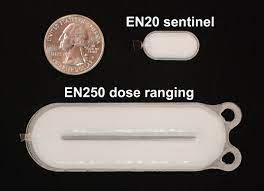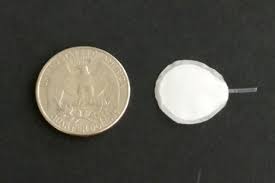THIS BLOG IS ALSO AVAILABLE AS AN AUDIOCAST
As someone with a family history of type 1 diabetes (T1D) I know how devastating the condition can be. I also know how challenging it can be to keep it under control and the consequences of failing to do that. Not maintaining healthy blood sugar levels can have a serious impact on the heart, kidney, eyes, nerves, and blood vessels. It can even be fatal.
Right now, controlling T1D means being careful about what you eat, when you eat and how much you eat. It also means regularly checking your blood throughout the day to see if the glucose level is too high or too low. If it’s too high you need to inject insulin; if it’s too low you need to take a fast-acting carbohydrate such as fruit juice or glucose to try and restore it to a healthy level.
That’s why two new approaches to T1D that CIRM has supported are so exciting. They both use small devices implanted under the skin that contain stem cells. The cells can both monitor blood sugar and, if it’s too high, secrete insulin to bring it down.
We sat down with two key members of the Encellin and ViaCyte teams, Dr. Crystal Nyitray and Dr. Manasi Jaiman, to talk about their research, how it works, and what it could mean for people with T1D. That’s in the latest episode of our podcast ‘Talking ‘Bout (re)Generation’.
I think you are going to enjoy it.



Dr. Crystal Nyitray, CEO & Co-founder Encellin

Thank you for this encouraging update on research and development of T.1 diabetes management and eventual cure. I have a few questions as follows?
1. Are the encapsulated stem cells taken from our own bodies? If not, then why not?
2. In the same way that quick and thorough research in to Covid19 vaccines, is it feasible to ask why can’t the same resources be adopted to this research and treatment? I think Diabetes consumes around 15% of total budget spend in the USA and the same in the UK so it’s extremely important that more is done.
3. Is there research being done using stem cells to repair the damage caused by Diabetes, such as nerve damage, macular degeneration, vascular problems etc?
4. How can I or anyone else apply to be used in the human research of these treatments? ViaCyte appear to be a little further advanced and may require more human ‘guinea pigs’!
Hi Richard, great questions
1) No, they are taken from healthy donors so the researchers can have a supply on hand. Ultimately this will make any successful therapy cheaper.
2) It’s easy to forget that research had been going on for COVID-like diseases for more than a decade so when the pandemic hit and the researchers were quickly about to break down its genetic code it was a relatively straight forward thing to engineer a way of blocking the virus. With an autoimmune disorder it’s a lot more complex and, as you can see, it’s taking longer.
3) There is research being done to address some of the other issues caused by diabetes
4) The easiest way to apply is to reach out to the companies that are doing the clinical trials and see if you are a good candidate for their approach. You can find a list of companies doing this work on the http://www.clinicaltrials.gov website.
Thank you for your response. I’ll follow up with the details you’ve provided.
Much appreciated.
A very informative and interesting article Kevin. I too live with (and support) family members with diabetes and am fully aware of the devastating effects on them and life in general. The science around at the moment is just amazing and I will be watching the development of this with interest! Thanks again – Anthony (in the UK)